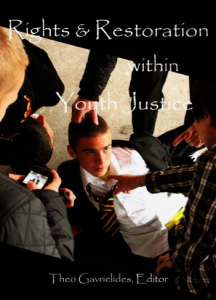News & Announcements
- Details
- Written by Joshua Wachtel
 Police from Belarus during restorative circle trainingSimon Saxton, Residential and Alternative Provisions Manager, and Jacqui Raynor, Police Inspector, both for North Yorkshire, UK, and trained as IIRP UK trainers, recently visited the Gomel region of the Republic of Belarus, under the auspices of the Chernobyl Children's Project (UK), to deliver restorative practices training.
Police from Belarus during restorative circle trainingSimon Saxton, Residential and Alternative Provisions Manager, and Jacqui Raynor, Police Inspector, both for North Yorkshire, UK, and trained as IIRP UK trainers, recently visited the Gomel region of the Republic of Belarus, under the auspices of the Chernobyl Children's Project (UK), to deliver restorative practices training.
Trainees received an introduction to restorative practices and circles training during the five-day visit in May, 2013. Participants included police officers assigned to juvenile correction services, as well as teachers and psychologists working primarily in vocational schools. A model circle was filmed and shown on local television.
- Details
- Written by Joshua Wachtel
 Photo by woodleywonderworks at Flickr Creative CommonsRoss Brenneman at EdWeek's "Rules for Engagement" blog reports on a recent pole, the "Phi Delta Kappa/Gallup annual national survey," that shows few Americans have heard of "Common Core Standards," which have been adopted by all but four states, and even fewer understand what they are.
Photo by woodleywonderworks at Flickr Creative CommonsRoss Brenneman at EdWeek's "Rules for Engagement" blog reports on a recent pole, the "Phi Delta Kappa/Gallup annual national survey," that shows few Americans have heard of "Common Core Standards," which have been adopted by all but four states, and even fewer understand what they are.
However, according to Brenneman, "There was huge support for the idea that schools should address social-emotional skills. Over 50 percent of respondents displayed strong agreement with the following statements:
- Details
- Written by Joshua Wachtel
 ArchDaily accompanied their interview of VanBuren with this photo, a redesign of a courtroom from one of VanBuren’s workshops courtesy of FOURM Design StudioThis piece caught my attention for a number of reasons, not least because it comes from such a surprising and fresh direction. In a recent article titled "Restorative Justice: An Interview with Deanna VanBuren," ArchDaily, a trade publication for architects and designers, notes that the group Architects, Designers and Planners for Social Responsibility (ADPSR) "is campaigning to have the [American Institute of Architects] forbid its members from designing prisons" as a form of protest against the punitive U.S. penal system.
ArchDaily accompanied their interview of VanBuren with this photo, a redesign of a courtroom from one of VanBuren’s workshops courtesy of FOURM Design StudioThis piece caught my attention for a number of reasons, not least because it comes from such a surprising and fresh direction. In a recent article titled "Restorative Justice: An Interview with Deanna VanBuren," ArchDaily, a trade publication for architects and designers, notes that the group Architects, Designers and Planners for Social Responsibility (ADPSR) "is campaigning to have the [American Institute of Architects] forbid its members from designing prisons" as a form of protest against the punitive U.S. penal system.
But the editors are pleased to have discovered the work of Deanna VanBuren of FOURM Design Studio, who says she is looking at "the question of how architects might actually change the system." Amazingly, she is doing so by looking at prison and court design through the lens of restorative justice and restorative practices.
- Details
- Written by Joshua Wachtel
 The Kentucky Center for Restorative Justice and the Children’s Law Center present Restorative Practices: A Statewide Symposium at Spalding University on Thursday, October 10th, 2013, from 9 am to 5 pm. The theme of the symposium is "Teaching Leaders to Implement Restorative Practices for Youth."
The Kentucky Center for Restorative Justice and the Children’s Law Center present Restorative Practices: A Statewide Symposium at Spalding University on Thursday, October 10th, 2013, from 9 am to 5 pm. The theme of the symposium is "Teaching Leaders to Implement Restorative Practices for Youth."
IIRP President Ted Wachtel will present a keynote address on themes from his new book, Dreaming of a New Reality: How restorative practices reduce crime and violence, improve relationships and strengthen civil society. Sujatha Baliga, director of the Restorative Justice Project for the National Council for Crime & Delinquency will also be featured.
For more information call 502-873-4314 or register online.
- Details
- Written by Joshua Wachtel
- Details
- Written by Joshua Wachtel
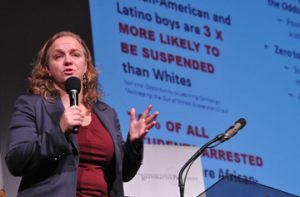 Cami Anderson, State District Superintendent, Newark Public SchoolsIn a press release titled "Zero Tolerance for Zero Tolerance Policies," Newark Public Schools (NPS) and Newark Police Department (NPD) announce the launch of a "Historic Initiative with the International Institute for Restorative Practices to End the School to Prison Pipeline."
Cami Anderson, State District Superintendent, Newark Public SchoolsIn a press release titled "Zero Tolerance for Zero Tolerance Policies," Newark Public Schools (NPS) and Newark Police Department (NPD) announce the launch of a "Historic Initiative with the International Institute for Restorative Practices to End the School to Prison Pipeline."
The article says:
Staff members from NPS joined forces with NPD to shift school discipline policies from zero tolerance to youth development. The training was facilitated by the world renowned International Institute for Restorative Practices (IIRP). The initiative was spearheaded by NPD Police Director Samuel A. DeMaio and NPS Superintendent Cami Anderson.
- Details
- Written by Joshua Wachtel
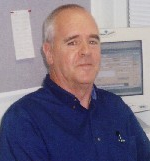 Ivan Webb, a retired principal and teacher from Tasmania, Australia, tweets about restorative practices (@IvanWebb). He collects his weekly updates in a weekly online newspaper format, called Restorative Schools (embedded below). In last week's edition, he posted a short sidebar editorial in which he argues that while restorative practices are effective for responding to serious incidents, people should not stop there but consider the reasons for adopting a more proactive approach, "to be restorative for all students all the time."
Ivan Webb, a retired principal and teacher from Tasmania, Australia, tweets about restorative practices (@IvanWebb). He collects his weekly updates in a weekly online newspaper format, called Restorative Schools (embedded below). In last week's edition, he posted a short sidebar editorial in which he argues that while restorative practices are effective for responding to serious incidents, people should not stop there but consider the reasons for adopting a more proactive approach, "to be restorative for all students all the time."
- Details
- Written by Joshua Wachtel
 Here's a radio program about a therapeutic boarding school located in northern Idaho for at-risk teens where restorative justice circles are becoming more and more embedded for responding to problems and helping teens work through conflict. The host is Lon Woodbury and the interview is with Lisa Hester, director of student life at Boulder Creek Academy in northern Idaho.
Here's a radio program about a therapeutic boarding school located in northern Idaho for at-risk teens where restorative justice circles are becoming more and more embedded for responding to problems and helping teens work through conflict. The host is Lon Woodbury and the interview is with Lisa Hester, director of student life at Boulder Creek Academy in northern Idaho.
The player will popup in a new window at LA Talk Radio.
- Details
- Written by Joshua Wachtel
Update: Seminary students are eligible for a $550 discount on this event. To register call 1-610-807-9221.
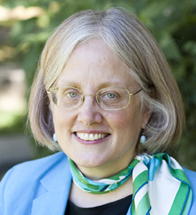 Deborah van Deusen Hunsinger, Professor at Princeton Theological Seminary, attended the FaithCARE event in Ontario, Canada[/caption]"If restorative practices were more widely known, and its structures and processes more widely put into place, churches would be far better equipped to deal with conflict, harm, or trauma in a healthy manner." -Deborah van Deusen Hunsinger, Professor of Pastoral Theology, Princeton Theological Seminary, Princeton, New Jersey
Deborah van Deusen Hunsinger, Professor at Princeton Theological Seminary, attended the FaithCARE event in Ontario, Canada[/caption]"If restorative practices were more widely known, and its structures and processes more widely put into place, churches would be far better equipped to deal with conflict, harm, or trauma in a healthy manner." -Deborah van Deusen Hunsinger, Professor of Pastoral Theology, Princeton Theological Seminary, Princeton, New Jersey
To this end, the IIRP is offering a 4-day retreat at Kirkridge Retreat Center in eastern Pennsylvania, September 23-26, 2013, titled "Strengthening Faith Communities Through Restorative Practices." The event will be co-facilitated by Bruce Schenk, director of IIRP Canada, and Anne Martin, director of FaithCARE Services, Shalem Mental Health Network, Ontario, Canada.
- Details
- Written by Joshua Wachtel
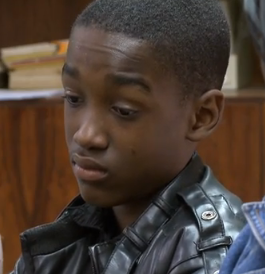 This month the Public Broadcast System in the United States is showing a documentary film titled Fixing Juvie Justice. The film provides a critique of the revolving door of youth justice, and its criminalizing effect on many youth who originally commit very minor crimes. Then it turns to an examination of restorative justice as an alternative model, and discusses some of the roots of conferencing in New Zealand.
This month the Public Broadcast System in the United States is showing a documentary film titled Fixing Juvie Justice. The film provides a critique of the revolving door of youth justice, and its criminalizing effect on many youth who originally commit very minor crimes. Then it turns to an examination of restorative justice as an alternative model, and discusses some of the roots of conferencing in New Zealand.
Dr. Lauren Abramson, founder and executive director of the Community Conferencing Center in Baltimore, Maryland, USA, and Assistant Professor of Child Psychiatry at Johns Hopkins School of Medicine, is quoted throughout the video. She was a student of Sylvan Tomkins, whose theory of affect has been very useful for helping to explain what happens in a restorative conference. Abramson also describes her personal quest to find a better way to work with criminal offenders, especially young ones.

Restorative Works Year in Review 2024 (PDF)
All our donors are acknowledged annually in Restorative Works.

